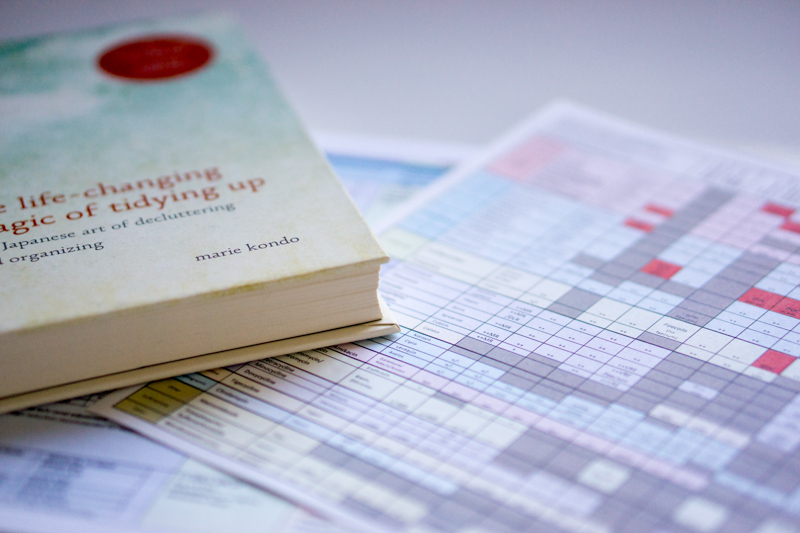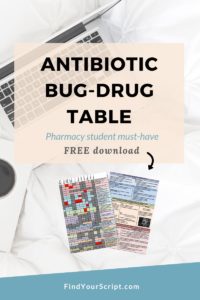
How to Study in Pharmacy School | Advice from a Professor
Grab your FREE Quick Sheet Today!
With the start of the new semester, I’ve encountered a large number of students struggling to find her/his best method for studying in pharmacy school. Yes, studying in pharmacy school can be a very personal experience and preference. But, effective studying is a key component of success in this 4-year road to a doctorate degree.
Watch on YouTube
Here are my Top Strategies for Studying in Pharmacy School
1. Organize and set-up your calendar for the semester
The very first thing I recommend doing after starting class is taking the Schedule/Syllabus and putting all the dates of assessments (quizzes, exams, etc) into your preferred calendar. If this is an electronic calendar, it should sync to all your devices for easy access. Color coding is highly recommended. Each class can be coded with a different color.
Next, add in any work schedules, co-curricular events or activities and personal events. This will help keep your schedule organized and help you plan day-to-day or week-to-week when scheduling study time, fitness, and life activities.
Personally, since it’s fall right now, I add in NFL games (go Packers!) and college games (go Trojans!) too – you have to balance fun activities you love with school work.

Products I recommend:
There are a few paper planners that really made a difference in how I plan and reach my goals that I’d love to share with you.
- My personal planner using my signature Clarify Simplify Align framework – now available on Amazon!
- 5-Minute Gratitude Journal— these BEST way to reflect and bring intention and gratitude back into life. Feeling stress? Use this for just one week and you’ll feel happier and more fulfilled!
- PowerSheets — these are easy-to-follow goal sheets. They dig deep into prioritizing what matters most in your life.
- inkWell Press planner— fully customizable and amazing disc system to add and remove papers easily throughout the year
- Full Focus Planner — a 90-day goal system. Sleek and simple with extra tutorial videos from Michael Hyatt to launch you into a successful 90-day plan!
- Erin Condren — fun & colorful with 3-different ways to customize. Use the full planner or simple condensed notebooks & gratitude journals to fit your life.
I’ve also made a list of all of my favorite goal planning essentials for you.
2. Review the material the night before the lecture
I highly recommend scheduling time each night to review the material that will be covered the following day in class. This could include downloading and skimming the lecture files (Powerpoint slides) from the professor, reviewing the objectives of the lecture, reading a portion or the entire book chapter associated with the topic or reading an article related to the topic.
This is particularly helpful for therapeutic-related classes. Much of the information is new each day during lecture time – causing confusion if you are not able to quickly process this new information. Acclimating to the material and having a solid baseline before a professor starts to lecture may translate into improved listening during lecture time, improved retention and greater understanding.
3. Use class time wisely
Find out what type of learner you are –visual, auditory, read/write or kinesthetic – also known as the VARK categories. Once you know what type of learner you are, employ these strategies during class time.
Effectively using class time or lecture time to retain information can be a huge time saver. You may write notes, listen attentively, draw pictures or diagrams or rationalize patient case examples during class to best suit your learning style.
If you are easily distracted, consider leaving some materials behind – that means not taking your phone to class (or leaving it in your bag), leaving behind your laptop or tablet (or if you need it to take notes electronically, installing the Freedom App to block you from apps/websites), and positioning yourself within the class to allow the best view of projector screens & limit distractions around you.

Example of my Infectious Disease Antibiotic Medication Chart
4. Create Study Guides, Summary Sheets and/or Medication Charts
Begin organizing material into easy to process materials for yourself. This could include creating study guides, summary sheets about a topic or medication charts. Don’t get overwhelmed here – utilize your resources – whether that is taking a pre-made medication chart and adding in notes and comments to the file – or working within your study group (recommend 3-4 students in a study group) to divide the work and share between each other. Organizing the information in the way that fits your learning style and allows you to easily process it will be helpful throughout the semester and as you progress through the curriculum – when you need to continue to retain and apply this knowledge.
Grab your FREE Quick Sheet Today!
5. Test your Knowledge
You have put in the effort with the steps above, now what? Test your knowledge. Personally, I recommend taking out a blank piece of paper and a pen or pencil. Remove everything else from your desk. Pick a topic you just studied and write down EVERYTHING you remember from that topic. This will not only test your knowledge of content, it will also test your ability to spell medication classes, mechanism of action (MOA) and medication generic & brand names.
If you prefer, you can begin with a blank piece of paper and the objectives from the topic listed on the page with room to write below each objective. Answer each objective (usually 3-5 objectives per 1-2 hours of lecture time).
For this step, I highly recommend using paper/pen and no electronic devices.
Now, assess your knowledge. Where were their gaps or holes? Identify these areas and work on strengthening these weaknesses as you continue your studying.
Finally, utilize your resources. Many institutions utilize AccessPharmacy for online textbooks. This resource comes with quizzes/exams that are associated with each book chapter or topic. Use these online quizzes (usually multiple choice in design) to test your knowledge.

